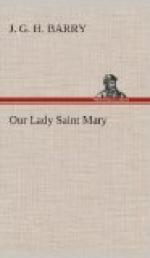This fundamental truth of Christ’s teaching, that through Him a new and closer relation to the Father becomes possible, and that the Kingdom is its embodiment, is one of the truths which have received constant lip-service, but have never been really assimilated in the working life of the Church. That the Church is the Body of Christ and we His members, and that by virtue of this membership in Him we are also members one of another; that we are, at our entrance into the Kingdom, made, as the Catechism puts it, members of Christ, children of God, and heirs of the kingdom of Heaven are truths of most marvellous reach and of splendid social implications. But can we say that they have very wide or real acknowledgment?
In face of a divided Christendom it seems almost farcical to talk of a Christian Brotherhood. The baptismal membership of the Church of God has fallen into group organisations whose mutual antagonism is of the bitterest kind. The so-called “religious press” is perhaps the saddest picture of modern Christian life. One could name a half dozen journals off hand, organs of this or that group, every one a sufficient refutation of the claim of the Christian Religion to be a Brotherhood of the Redeemed. There is no possible excuse for the tone of such publications.
No doubt it is an inevitable result of the state of a divided Christendom that there should be disputes and controversies. We shall never reach any expression of the Brotherhood that is the Church by saying, Peace, Peace, where there is no Peace. The unity we look to must be reached through painful sacrifice and through conflict; and we know that the wisdom that is from above is “first pure, and then peaceable,” But it is quite possible while holding with all firmness to the truth, to hold it in the fear and love of God.
So long as Christendom is thus divided into hostile camps the ideal of brotherhood is impossible of realisation. I do not want however to discuss this matter from the point of view of Church unity. I want to point out that within the groups themselves there is small vision of the meaning of the oneness of Christ. For brotherhood is the expression of a spiritual reality. It looked for a moment in the early days of the Church as though the ideal would be realised. The description of the Church was that “all that believed were together, and had all things in common: and sold their possessions and goods, and parted them to all men, as every man had need.” That was, no doubt, a passing phase of the life of the Church in Jerusalem, but we have evidence that elsewhere all distinctions based upon social considerations were for the moment swept away. There is “neither Jew nor Greek, there is neither bond nor free, there is neither male nor female: for ye are all one in Christ Jesus.” Our glimpses of the congregations of the early Church are of men and women of all classes held together by the bond of a common membership in




